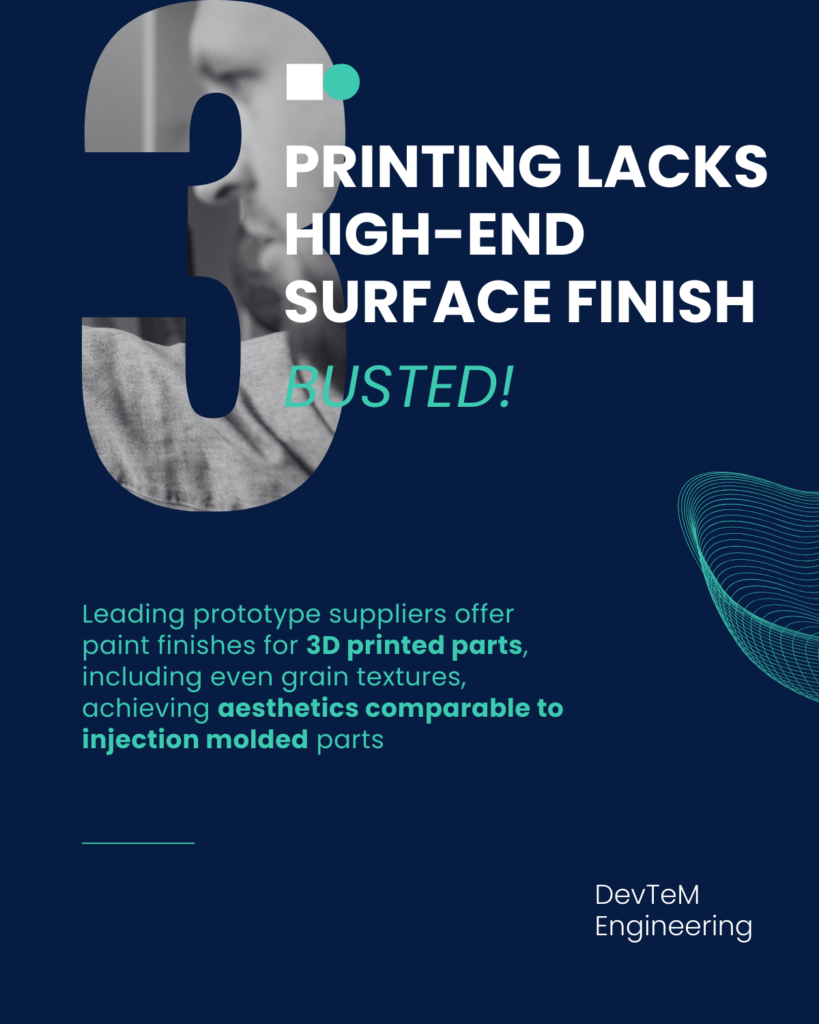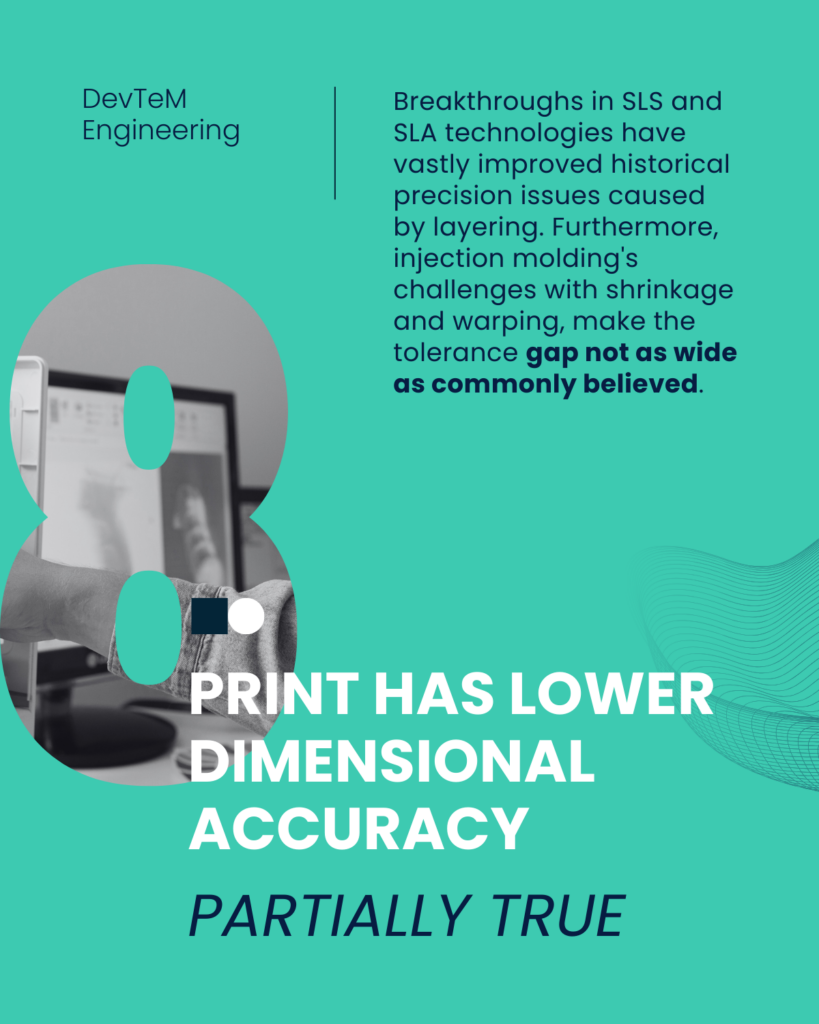Reading time: 4 minutes (*scroll down to images for the summarized version)
In our past projects, we’ve tackled the challenges of automotive engineering, where choosing the right production method is crucial. Yet, with so much to consider, common misconceptions often obscure the path forward. Let’s demystify some common misconceptions and illuminate the realities of 3D printing vs injection molding.
Myth 1: 3D Printing is Cheaper for Low/Medium Volumes – Busted!
While initially cost-effective for low-volume production, injection molding from an aluminum tool becomes more economical at moderate volumes, challenging the notion of 3D printing’s universal cost advantage. Stay posted for a detailed calculation in an upcoming study case where the breakeven point may surprise you!
Myth 2: 3D Printed Parts are not a Good Solution for Products with Clipping Features – Partially True
While new 3D printing materials offer impressive elastic properties, injection molded prototype parts from aluminum tools remain superior for components with integrated plastic clips, especially those requiring frequent assembly and disassembly, due to their unmatched durability and precision.
Myth 3: 3D Printed Parts Lack High-End Surface Finish – Busted!
Leading prototype suppliers offer paint finishes for 3D printed parts, including even grain textures, achieving aesthetics comparable to injection molded parts.
Myth 4: 3D Printed Parts Textile Wrapping Concerns – Myth Busted
Aging tests have proven that 3D printed parts effectively retain textile layers, such as Alcantara, glued to them throughout the product’s lifetime.
Myth 5: 3D Printed Parts are Easier to Design – Fact
Unlike injection molding, 3D printing eliminates tool design constraints, providing designers with unprecedented freedom and flexibility to explore innovative solutions.
Myth 6: 3D Printed Parts Always Have Shorter Lead Times – Fact with Caveats
While typically boasting shorter lead times, the breakeven point varies depending on factors such as production volume and material complexity.
Myth 7: 3D Printed Parts Do Not Provide Proper Data About Series Parts Mechanical Behavior (When Series will be Plastic Injection) – Fact
In assessing mechanical behavior for future injection molded parts, prototypes from aluminum tooling offer superior insights compared to 3D printed parts.
Myth 8: 3D Printed Parts Have Lower Dimensional Accuracy – Partially true
Historically, 3D printed parts faced challenges with tolerances due to their layered construction. However, advancements in technologies like SLS and SLA have vastly improved precision and injection molding encounters issues like shrinkage, warping, and tooling wear, the tolerance gap isn’t as significant as perceived.
In certain instances, such as with positioning pins and holes, 3D printing may struggle to achieve the typical precision of +/-0.05mm seen in plastic injection parts. However, a common workaround for these specific features involves printing the part with excess material and then performing a secondary operation using a process capable of meeting those tolerances
Conclusion
By dispelling these myths and highlighting factual insights, we empower automotive engineers to make informed decisions regarding production methods. At DevTeM, we understand that each client situation is unique. Contact us today, and let us help you determine the best prototype technology for your specific needs.











